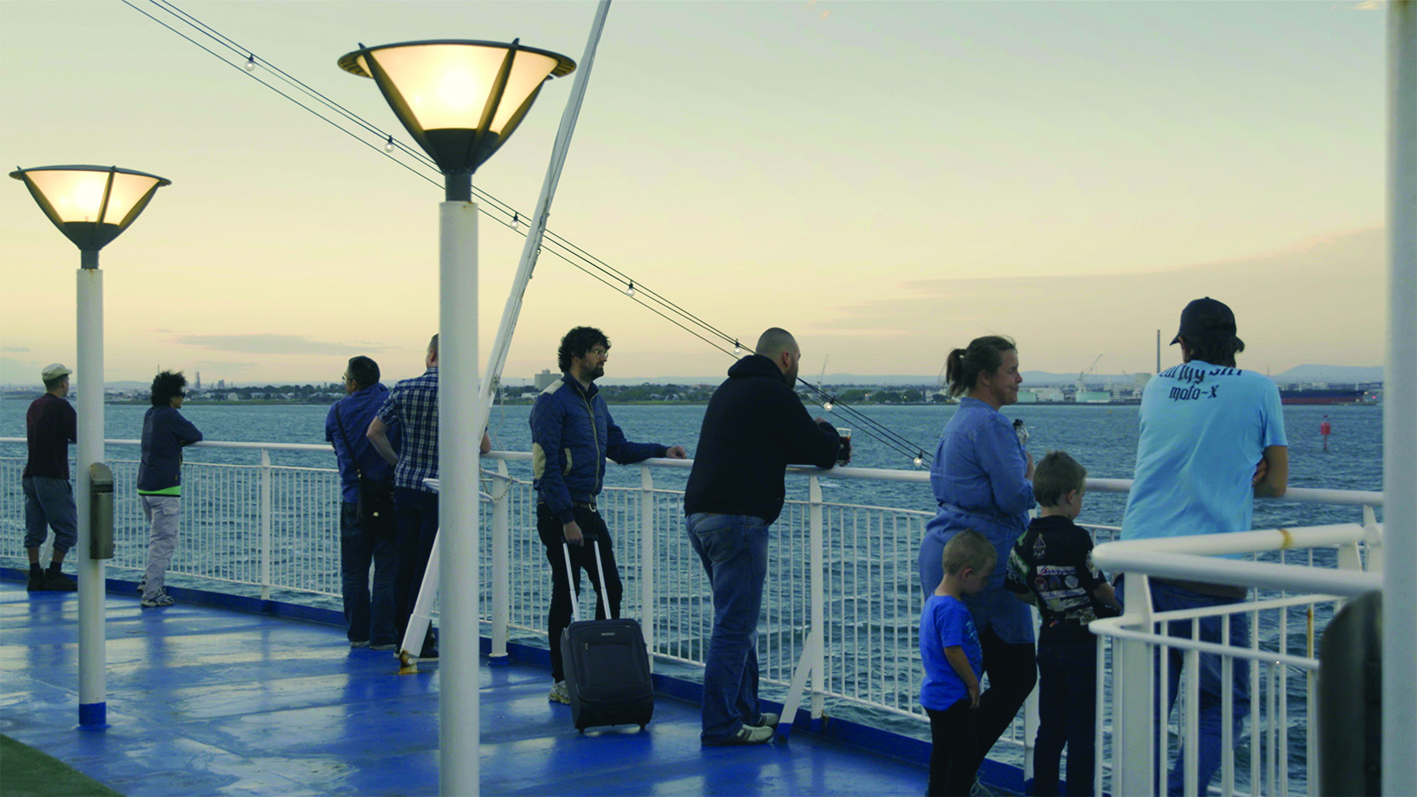Under the Cover of Cloud (2018) begins with its protagonist returning home on the trusty Spirit of Tasmania ferry. Having lost his job, he is on his way to visit his family in Tasmania, in the hope that he might start writing a new book, ‘something bigger’. His mellow voiceover notes: ‘I want to write something beautiful about cricket – a piece of literary nonfiction. It will, in some sense, be about Tasmanian batsmen, and it will be from the heart.’
Starring writer/director Ted Wilson as himself, and his family as themselves, and Tasmania’s cricket legend David Boon as himself, Under the Cover of Cloud is a film about itself but also not about itself; it is a film about cricket but not about cricket. It is a fiction that feels almost real, while also functioning as a documentary so neatly sliced up that reality seems just outside the screen. So when an audience member asked, during the post-screening Q&A at the 2018 Melbourne International Film Festival (MIFF), where they could find the book that Ted-the-protagonist was ostensibly writing in the film, Wilson-the director – who is also Wilson-the-writer and, of course, Wilson-the-actor we’d just spent an hour-and-a-half watching both act and not-act as Ted-the-protagonist – broke into a grin.
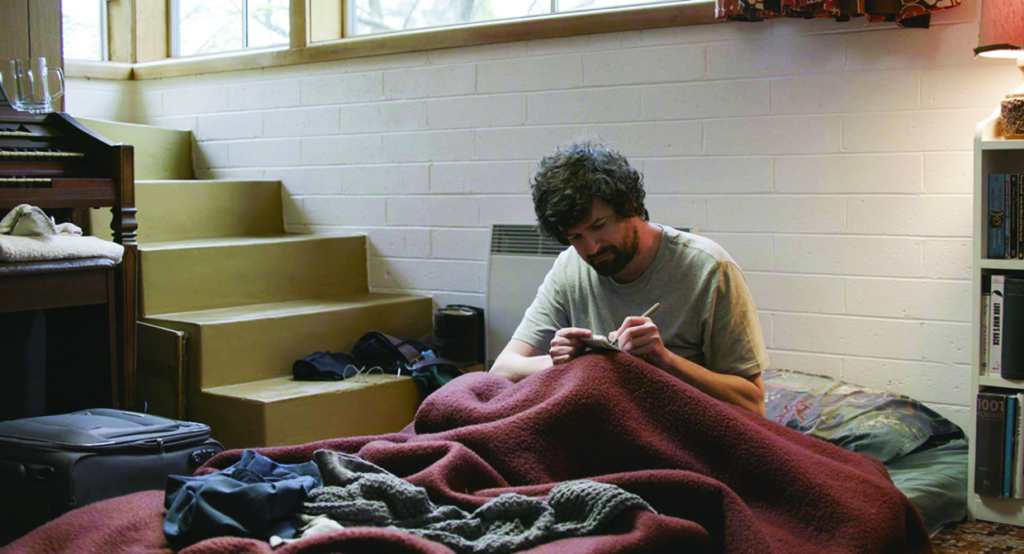
Though there are a handful of scenes showing Ted solemnly writing into a spiral-bound notebook, sometimes smoking a cigar, it is not Ted’s elusive book but rather what we are watching on screen that is the final manifestation of his ‘literary nonfiction’: the book Ted-the-protagonist is trying to write becomes, instead, the film Wilson-the-director has made.
The nineteen-year-old postmodernism obsessive or perhaps Barth/Barthes/Barthelme[1]Author John Barth, literary theorist Roland Barthes and short-story writer Donald Barthelme, all of whom are frequently associated with postmodernism. fanatic in me swoons. Welcome to the funhouse, yes, but: ‘For whom is the funhouse fun?’[2]John Barth, ‘Lost in the Funhouse’, in Lost in the Funhouse: Fiction for Print, Tape, Live Voice, Doubleday, New York, 1968. And so Ted Wilson multiplies, as if Barth’s own protagonist, Ambrose, had taken a wrong turn and somehow become lost in Launceston. But there are no mirrors here: just blue-grey mountains, household chickens, a laconic dog and Ted’s endearing mother, Colleen, garrulous and kind.
*
I tell my co-worker, H, that I’m writing an essay about a film that is about writing a book about cricket. H has recently taken up playing cricket; yesterday was cricket practice, and their muscles are sore. I think about the merits of practice, and then how perhaps all documentary filmmaking is practice – but then, what the real thing would be, I’m not too sure.
We sit around at work, waiting for something to happen. The mail comes and H signs for it. We open the New York Times crossword. ‘Five across, five letters: a feeling based on intuition?’ We think for a while, then give up. H clicks back to The Guardian’s live cricket feed to follow the game. H reads a few lines aloud. It sounds like poetry.
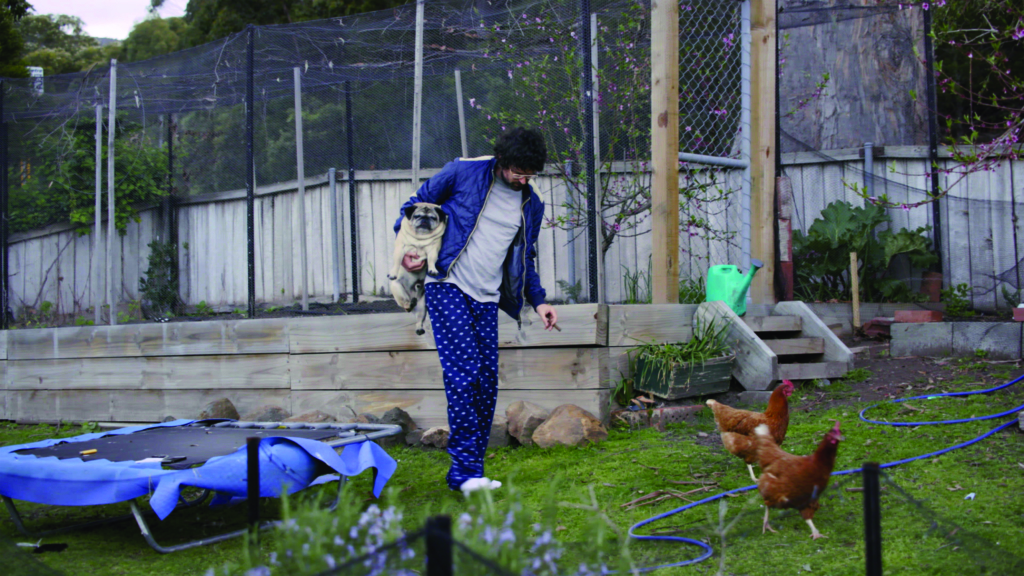
*
The film poster for Under the Cover of Cloud resists generic classification, and perhaps rightly so. Sitting somewhere between a poster, a book cover and an artwork, it bypasses the more literal film still or photograph, instead conveying a sense of the film through an impressionistic painting of gum trees. An impression, indeed. Labelled neither a fiction nor a documentary, Under the Cover of Cloud is merely marketed as ‘A modern Tasmanian film’.[3]See ‘Under the Cover of Cloud’, Ted Wilson official website, <http://www.tedwilsonfilms.com/under-the-cover-of-cloud/>, accessed 6 February 2019.
On Wilson’s website, the film is described as being ‘[d]enuded of narrative fanfare’,[4]ibid. though some fanfare is found in Ted’s own inconsistent voiceovers, which somehow simultaneously dictate narrative structure and emerge as quite pointedly at odds with the final story. He notes: ‘As I sat on the couch, my thoughts turned to David Boon […] he was diminutive, pugnacious and famous for his heavy drinking. Boony was truly an unlikely hero […] It was clear to me that I would benefit greatly from being in his presence.’ Yet, ultimately, protagonist-Ted’s half-hearted mission to find Boon is obscured by director-Wilson’s other mission: to create a ‘unique documentary portrait of middle Tasmania, rare in its loving commitment to a warm and convivial present’.[5]ibid. Wilson pointedly turns plot into subplot, and subplot into plot, and then questions the very concept of ‘plot’ altogether.
Similar to the term ‘literary nonfiction’, Wilson’s notion of a ‘documentary portrait’ holds its own internal contradiction. Under the Cover of Cloud becomes an exercise in the everyday. Wilson recognises the universality that underpins the comforting banality of family relations.
Similar to the term ‘literary nonfiction’, Wilson’s notion of a ‘documentary portrait’ holds its own internal contradiction. Under the Cover of Cloud becomes an exercise in the everyday. Wilson recognises the universality that underpins the comforting banality of family relations. Ted begins his visit to Tasmania by seeing his sister Jessie and her husband, and playing with their kids. The Wilson family is pulled into opaque reality, or perhaps framed as a clear fiction. Ted’s relationship with his mother soon becomes the focal point of the film.
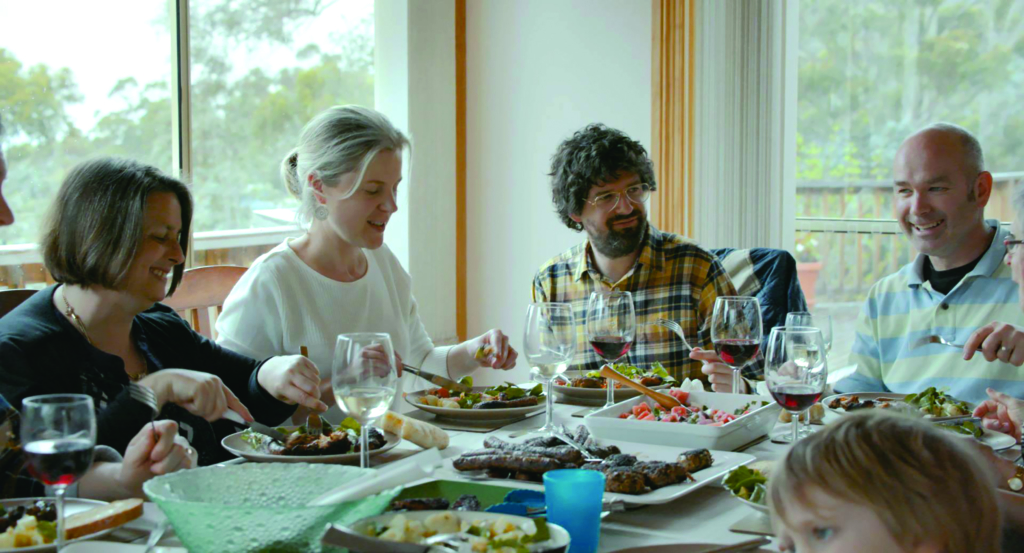
Wilson’s moments with Colleen-his-mother and Colleen-the-actor slide together. He tests limits in four long scenes/interactions with her. An unassumingly brilliant actor, Colleen Wilson holds her own while still appearing like a ‘regular’ mother, faithfully complying with her son’s artistic wishes. One can imagine her sighing, though clearly delighted, and asking, ‘Are you sure it needs to be me?’ while enlisting Wilson to bring in the laundry, or pull something from the top shelf. Ted’s interactions with his mother build from a silly moment during the Wilson family lunch, when Colleen tells the table, ‘I know David Boon!’ and then cackles: ‘A different David Boon.’ Ted’s brother Ben remarks, ‘That won’t work so good for your book, though, Ted, unless your spin was “people who live in Tasmania with the same names as famous athletes”.’ This reference to multiple identities aside, the persistence of these sweet motherly moments build, layer atop one another, and ultimately subvert the traditional ‘quest’ narrative that is ostensibly set in motion by Ted at the start of the film. It is through these long moments with Colleen that Ted’s ‘quest’ narrative is instead twisted into a narrative of return: to family, to home, to self.
Throughout the film, shots are close, implying a certain intimacy. But they also waver, underscoring how each shot is mediated through the camera’s eye. Wilson-the-director is careful to remind us that the camera is far from inert, nor does it have agency of its own. This mediation becomes quite clearly the result of human intervention. We are looking at what director of photography Joshua Aylett is seeing, and this mediation is never dissolved.
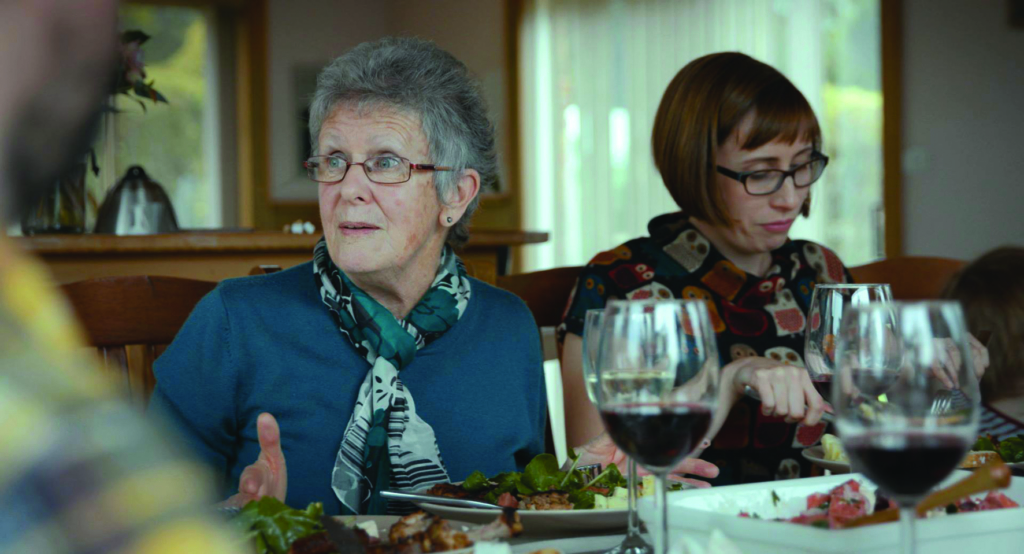
*
At MIFF, Wilson admitted that the final film was cut from fifteen hours of footage. His editor, James Vaughan, trimmed it down over a month, during a paid drug trial in hospital.[6]See John Roebuck, ‘Review | Under the Cover of Cloud (2018)’, ReelGood, 5 August 2018, <http://reelgood.com.au/reviews/review-cover-cloud-2018/>, accessed 4 February 2019.
Wilson’s disregard for plot is perfectly underscored when Ted, sitting alone, writing and smoking a cigar in his sister’s backyard, decides to pick up her dog and drops it among the backyard chickens – a very pointed, failed attempt to create drama. The chickens, of course, are mostly unperturbed, and the dog pauses, then wanders away. Ted looks on, holding his cigar. Of course, this dramatic failure by protagonist-Ted is, simultaneously, also a perfectly executed point by director-Wilson.
But this is not to say there are not moments that appear completely fictional, moments almost too perfect to be real. Take, for example, a scene in which Ted sits alone, looking out on the bay. A droll, almost facetious voiceover: ‘Why am I here?’ As he drinks his coffee, spiral-bound notebook in hand, a dolphin appears in the water.
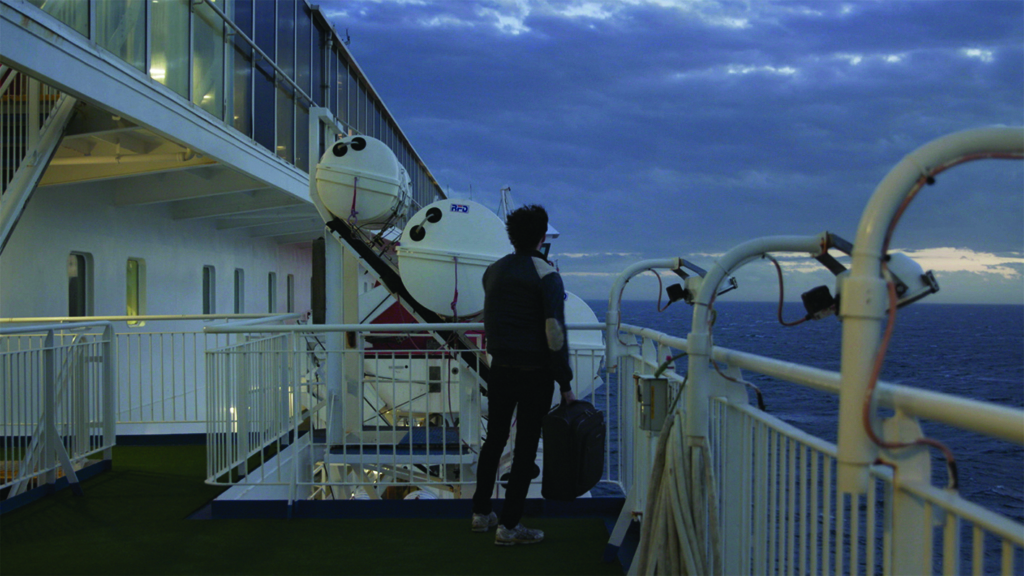
*
The film, though invoking (through the veritable plethora of Teds and Wilsons) a postmodernism of sorts, is perhaps more indebted to artists that have succeeded the movement. A comparison might be made with David Foster Wallace’s 1996 Infinite Jest. In this 1079-page novel, the continual flipping between the body text and its 388 endnotes draws attention to the physical object of the book itself as well as to the act of reading, while also evoking the back-and-forth exchanges that recur in the sport of tennis (a central location in the plot is the Enfield Tennis Academy). However, the narrative is arguably far from obscured by metafictive reference.
As with Infinite Jest, Wilson’s metafictive accoutrements don’t detract from the text’s impact … Under the Cover of Cloud is, perhaps, a perfect text for the internet age. It doesn’t matter, Wilson seems to say, whether it’s fact or fiction. Accept the fact as fiction and the fiction as fact.
In perhaps that same mode, Under the Cover of Cloud plods on like a cricket match. And, as with Infinite Jest, Wilson’s metafictive accoutrements don’t detract from the text’s impact. Instead, they become passing commentary on the fictionality of life, a recognition of the field we play in. Under the Cover of Cloud is, perhaps, a perfect text for the internet age. It doesn’t matter, Wilson seems to say, whether it’s fact or fiction. Accept the fact as fiction and the fiction as fact. It will occur regardless.
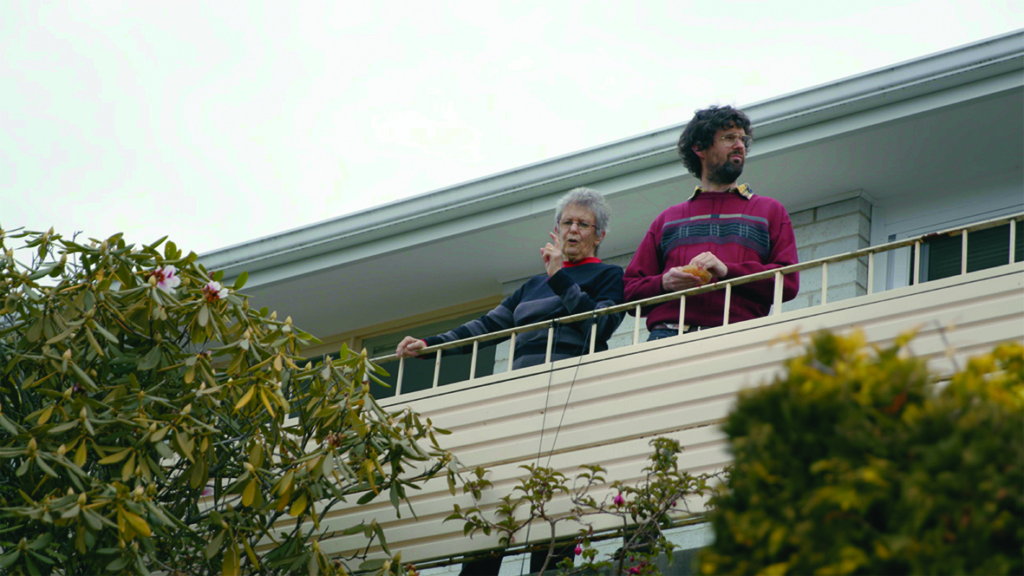
*
On the beach with his mother, Ted considers his quest to find Boon. ‘What I’d get from him, I don’t know.’
*
I meet my parents for lunch, tell Dad I’m writing a piece about ‘The Cricket’. His face lights up. I ask him if he’s ever met a cricketer. ‘I got Dougie Walter’s autograph!’ he says. ‘I was too shy to ask him, so I just stood there with my autograph book and my pen. But he signed it … I think he got the idea.’ Dad laughs.
And Don Bradman – he sold our family a piano. My dad went to school with him. The thing about David Boon, he held the same position as Don Bradman. That’s a position of the highest esteem. The job of the opener is to see the shine off the ball. See, when the ball is shiny, it can swing and swerve through the air. But, once the shine has been taken off the ball, the ball loses its movement. So the master craftsman, the top-order batsman, he can come in and dictate the play for the day. That’s why you put the best batsman at number three.
To make the analogy that Wilson spends the film taking the shine off the ball, waiting for the best batsman to appear to hit the film home, would be too easy, and it would be a disservice to the beautiful moments of the everyday that Wilson has painstakingly documented. But the somewhat-sudden appearance of Boon does seem straight out of a dream.
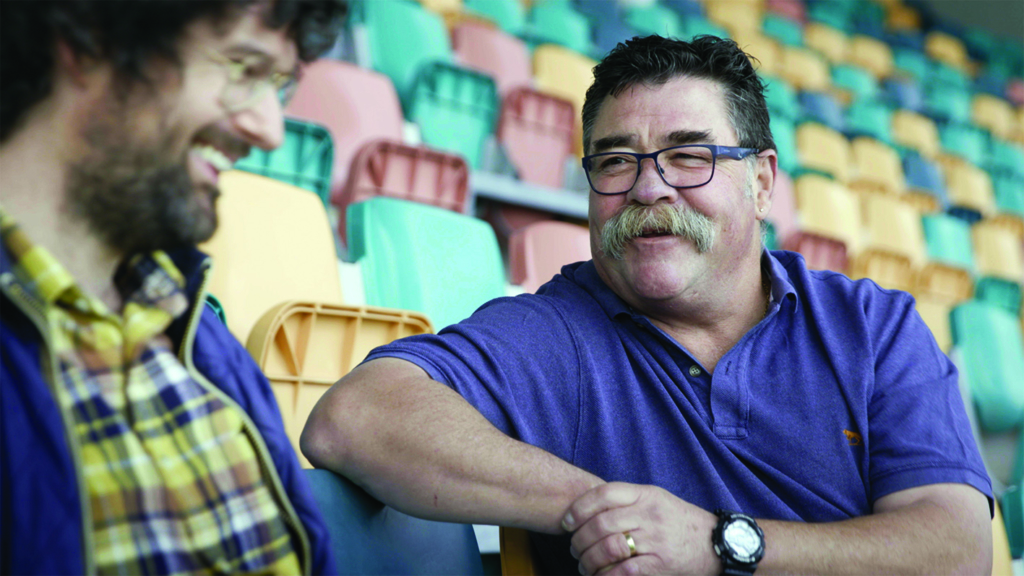
*
I ask my mother if she remembers David Boon. ‘I did! I liked him. I always waited for him to come on. He was chubby, gnarly. A big handlebar moustache.’
Dad adds, ‘Compact. A compact style … consistent, you know. Stayed in the crease.’
*
We’re still reading cricket commentary/poetry when another co-worker walks in, peers at the computer screen to see the crossword. H says: ‘A feeling based on intuition. Five letters?’
She pauses. Then: ‘… hunch!’
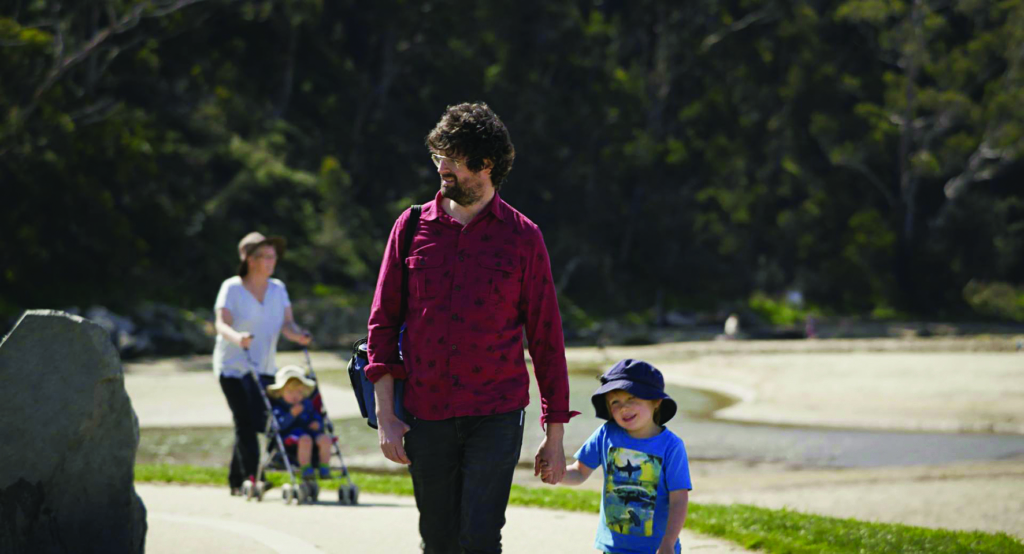
*
It would also be a disservice to Wilson to suggest that Under the Cover of Cloud is anchored on a hunch. But the film does feel based on intuition; he succeeds in creating moments of stillness that drag and pull. Under the Cover of Cloud is far from a simple exposition on the nature of documentary, or the texture of reality. Instead, Wilson reaches beyond postmodern posturing and asks: What is the power of a story? What is the power of family? What does it mean to create art in today’s world?
At times, the film is an endurance watch. And it is not the final appearance of Boon that enables Under the Cover of Cloud to sidestep the exhausting and narcissistic recursiveness that typifies postmodernism, but, rather, the poignant scenes featuring Ted and his mother. Ted’s (or is it Wilson’s?) proposed goal – to create ‘a piece of literary nonfiction […] from the heart’ – is realised in this stunning depiction of family, which sits in the crease between fiction and fact.
http://www.tedwilsonfilms.com/under-the-cover-of-cloud/
Endnotes
| 1 | Author John Barth, literary theorist Roland Barthes and short-story writer Donald Barthelme, all of whom are frequently associated with postmodernism. |
|---|---|
| 2 | John Barth, ‘Lost in the Funhouse’, in Lost in the Funhouse: Fiction for Print, Tape, Live Voice, Doubleday, New York, 1968. |
| 3 | See ‘Under the Cover of Cloud’, Ted Wilson official website, <http://www.tedwilsonfilms.com/under-the-cover-of-cloud/>, accessed 6 February 2019. |
| 4 | ibid. |
| 5 | ibid. |
| 6 | See John Roebuck, ‘Review | Under the Cover of Cloud (2018)’, ReelGood, 5 August 2018, <http://reelgood.com.au/reviews/review-cover-cloud-2018/>, accessed 4 February 2019. |
